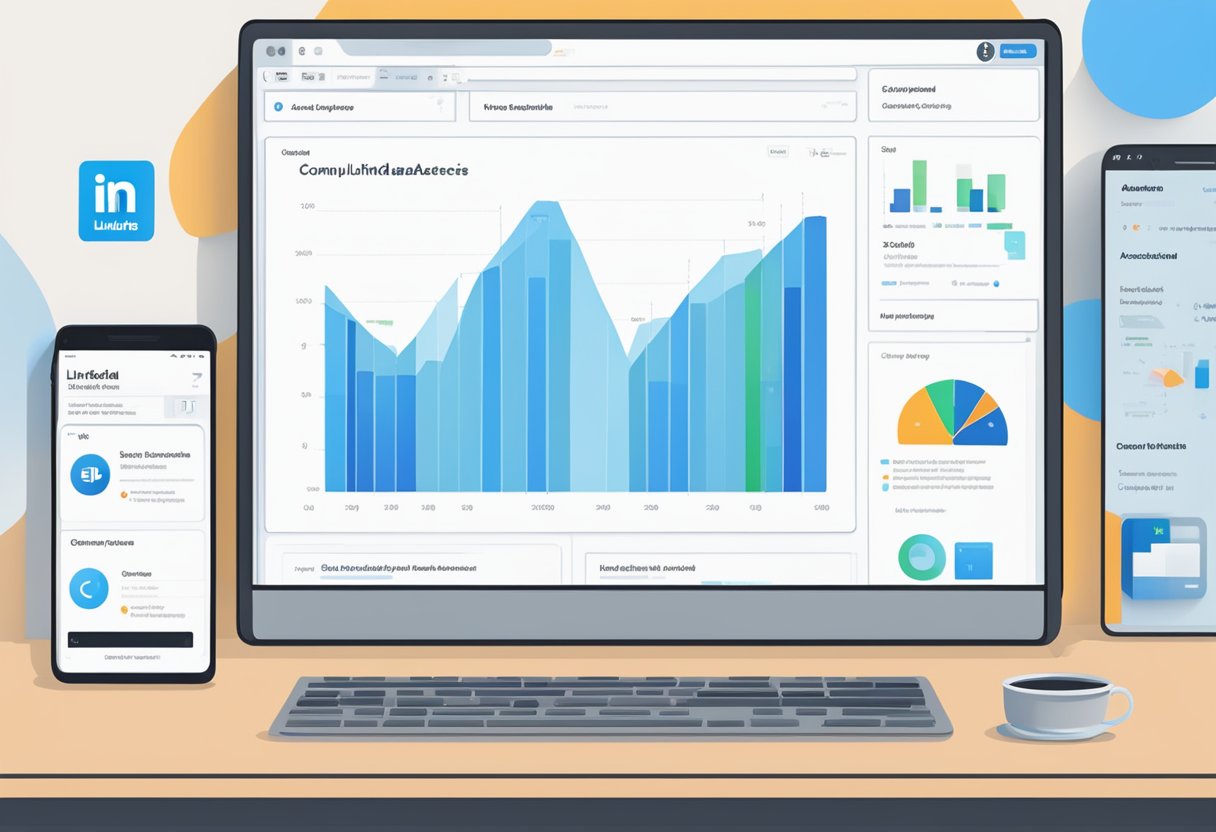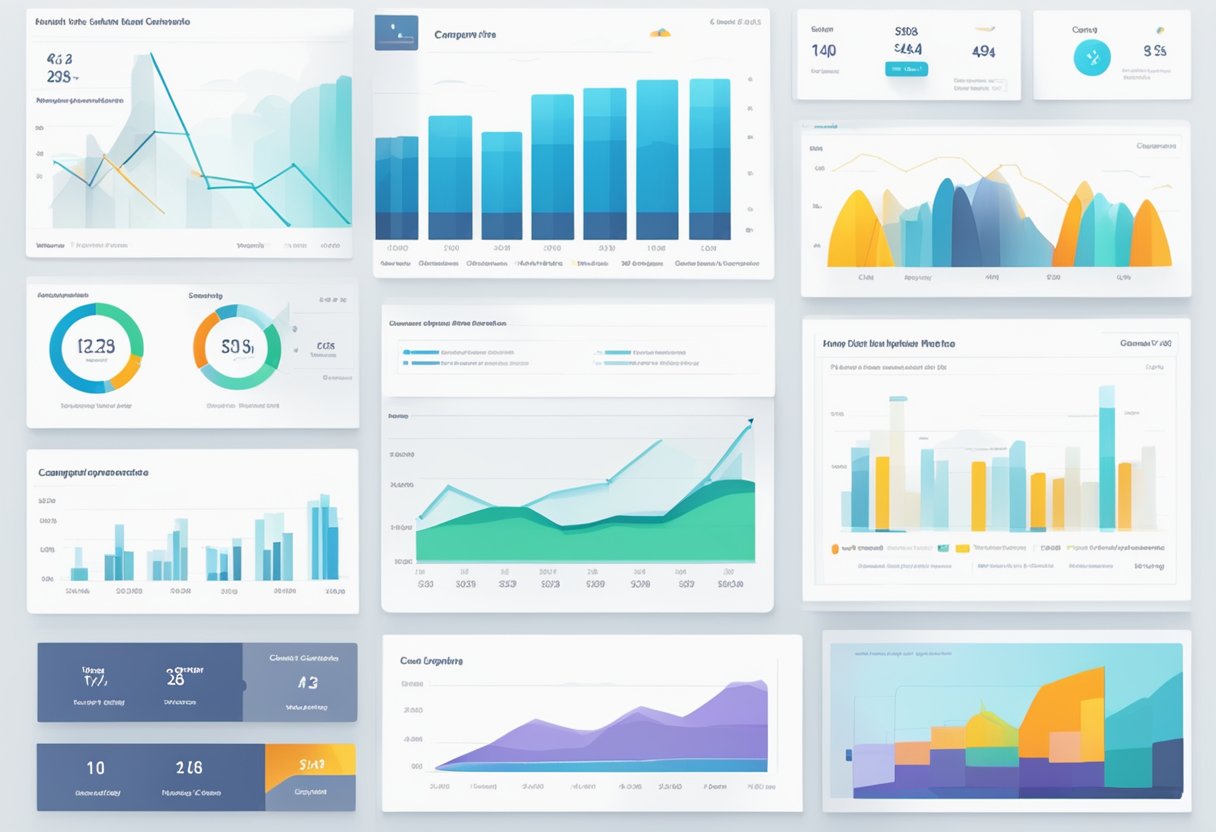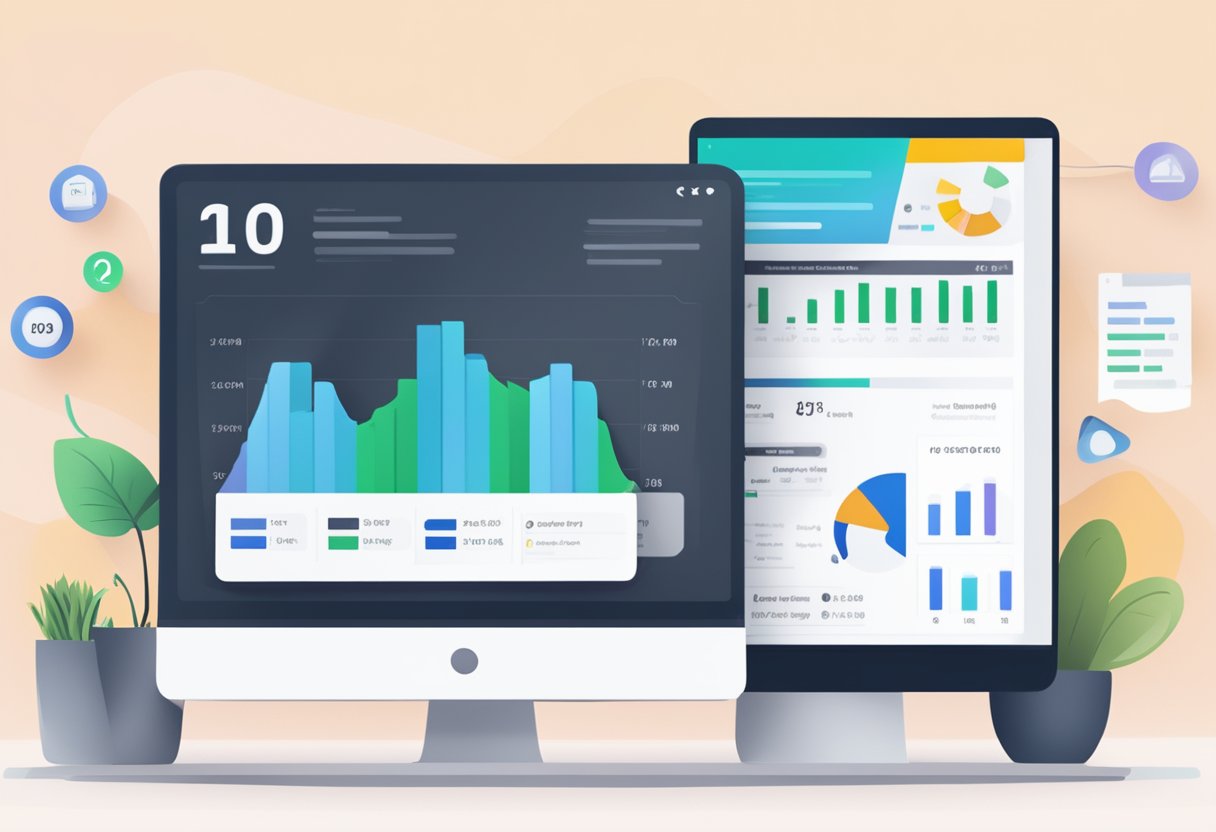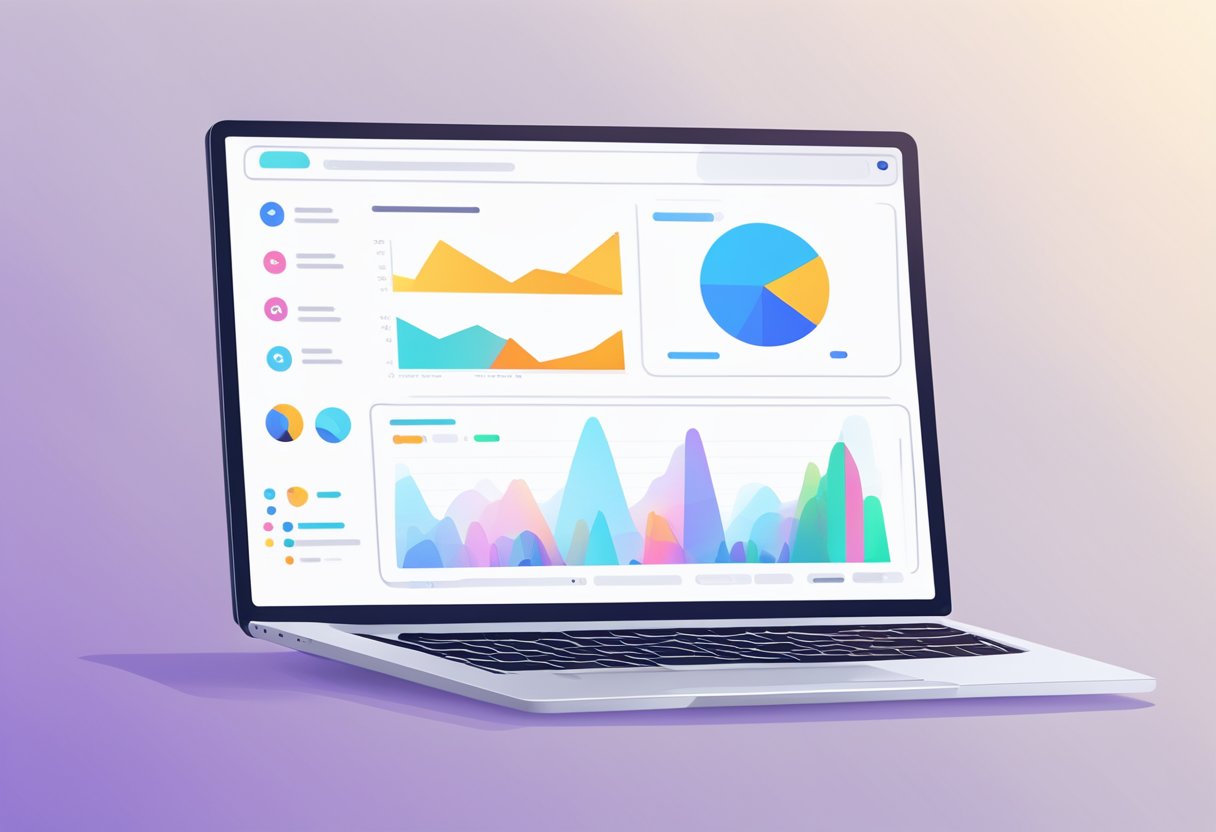LinkedIn Matched Audiences is a powerful tool in the digital marketer’s arsenal, providing the ability to hone in on a highly specific segment of LinkedIn’s vast professional network. Utilising Matched Audiences, advertisers can re-engage their website visitors, upload lists of contacts or companies, and take advantage of account-based marketing strategies to ensure their ads reach the right prospects. Whether focusing on generating leads, building brand awareness, or driving event registrations, this feature enhances the precision of targeting efforts within the LinkedIn ecosystem.

Creating a Matched Audience begins with integrating your own data with LinkedIn, which can include importing email lists, leveraging website traffic, or connecting to your Customer Relationship Management (CRM) system. By doing so, you can tailor your outreach to people who have previously interacted with your brand or those fitting specific professional criteria. Moreover, as part of a holistic strategy, advertisers combine different Matched Audiences to create layered and more sophisticated targeting criteria. This not only increases the relevancy of the ad campaigns but also fosters more meaningful connections with potential clients and partnerships.
Key Takeaways
- Matched Audiences leverages user data for targeted LinkedIn campaigns.
- Advertisers can import lists and use web traffic for custom audience creation.
- Strategic layering of audiences enhances ad relevancy and engagement.
Overview of LinkedIn Matched Audiences
LinkedIn Matched Audiences is an advanced targeting tool designed to enhance marketing campaigns by leveraging custom audience segments.
Definition and Purpose
LinkedIn Matched Audiences allows advertisers to use their own data to retarget website visitors, engage contacts from customer databases or marketing automation platforms, and reach decision-makers at target companies. It serves the purpose of combining an advertiser’s own data with LinkedIn’s rich member data to create more personalised and effective marketing efforts.
Benefits of Matched Audiences
The benefits of Matched Audiences are multifold. Advertisers can:
- Improve campaign relevance by using custom segments that are engineered to align with their marketing objectives, leading to higher engagement.
- Increase return on investment (ROI) through more precise targeting, which in turn can lower the cost per lead and increase the conversion rates.
By utilising LinkedIn Matched Audiences, they can leverage robust analytics to measure impact and refine strategies for future campaigns.
Setting Up Matched Audiences
Setting up matched audiences on LinkedIn allows advertisers to target their campaigns more effectively by connecting with specific groups of professionals. Here’s how to prepare your account, identify relevant audience sources and integrate data for precision targeting.
Account Preparation
One must first ensure that their LinkedIn account is configured correctly. Access to LinkedIn’s ad management tool, Campaign Manager, is requisite. Advertisers should verify that they have the appropriate permissions to create matched audiences within their account settings.
Audience Sources
Advertisers can source their audience from a variety of channels. One can upload a contact list, leverage website tracking to retarget website visitors, or integrate a list of companies. LinkedIn Matched Audiences also allows for the connection with CRM data, enabling advertisers to target members from their existing customer databases.
Data Integration
For the successful utilisation of matched audiences, integrating data is a critical step. Advertisers can integrate their audience data by uploading CSV files directly into the Campaign Manager or by using LinkedIn’s Insight Tag for website retargeting. It’s important to ensure data quality and privacy compliance when handling customer information.
By following these steps and employing LinkedIn’s advanced targeting features, advertisers can create custom segments that can significantly impact the performance of their campaigns.
Types of Matched Audiences
LinkedIn Matched Audiences empowers advertisers to refine their targeting by using LinkedIn’s rich set of data. Utilising distinct types of matched audiences can significantly improve the relevance of ad campaigns.
Contact Targeting
With Contact Targeting, advertisers can reach individuals by uploading a list of email addresses. LinkedIn matches these with profiles, enabling messages to be tailored directly to specific audiences. This method is particularly effective for campaigns aimed at existing contacts or leads.
Account Targeting
Account Targeting involves uploading a list of company names to target decision-makers within specific organisations. By focusing on particular companies, advertisers can craft bespoke advertising strategies and content designed for each business on their list.
Retargeting Website Visitors
Retargeting Website Visitors allows advertisers to reconnect with individuals who have previously interacted with their website. By installing the LinkedIn Insight Tag, they can create custom audiences from website visitors, optimising the likelihood of converting previous interest into actionable follow-up.
Developing a Targeting Strategy
Before diving into the practicalities of LinkedIn Matched Audiences, one must understand the cornerstones of a strong targeting strategy: clear objectives, precise audience segmentation, and tailored content.
Understanding Your Objective
The foundation of any campaign is its objective. Whether it’s increasing brand awareness, generating leads, or driving event registrations, each goal necessitates a different approach. For example, to stimulate lead generation, one might focus on LinkedIn Matched Audiences that target individuals with a history of opening marketing emails or visiting specific landing pages.
Audience Segmentation
Audience segmentation is pivotal for maximising the relevance of your messaging. Comprehensive understanding of LinkedIn’s targeting options allows for creating segments based on job functions, seniority, industry, or previous interactions with your brand. The how-to guide for LinkedIn Matched Audiences outlines the process for segmentation using website traffic, thereby enabling more refined targeting.
Crafting Personalised Content
Personalisation distinguishes your content, making it resonate more with the target audience. Content must be devised with the segments in mind, addressing their unique challenges and interests. A look into the best practices for Matched Audiences reveals that tailored content can significantly boost engagement rates and campaign performance.
Best Practices for Audience Matching
Effectively utilising LinkedIn Matched Audiences empowers advertisers to tailor their marketing strategies with precision. Understanding the specifics of these strategies maximises campaign relevance and ROI.
Maintaining Data Privacy
Respecting user privacy is paramount. Ensuring compliance with data protection regulations such as GDPR, advertisers should only use information that individuals have consented to share. This involves encrypting contact lists before uploading and regularly reviewing privacy policies to maintain trust.
Regular Audience Updates
Ad performance can be bolstered through periodic refreshes of audience data. Regular updates help in capturing the evolving interests of the target market, ensuring that campaigns stay relevant to consumer behaviour and the current market trends.
Testing and Optimisation
Commitment to A/B testing allows for data-driven optimisation. Advertisers should test different audience segments, ad formats, and content strategies, then rely on performance analytics to iteratively refine their Matched Audiences for heightened effectiveness.
Campaign Creation With Matched Audiences
Creating a campaign with Matched Audiences on LinkedIn allows for precise targeting by utilising existing data. This process enables one to connect with specific user segments directly through customised content and messaging.
Creating Sponsored Content
When initiating Sponsored Content campaigns, users can leverage Matched Audiences to display their ads to individuals who have previously interacted with their company’s content. To set this up, one must select the option for Matched Audiences within the Campaign Manager and then choose to create website audiences based on their website traffic data.
Messaging Campaigns
For Messaging Campaigns, Matched Audiences can be used to send personalised InMail messages to LinkedIn users who are more likely to engage. Advertisers can utilise their own data, such as email lists, to match with LinkedIn members, allowing for highly targeted and direct communication with potential customers or clients.
Dynamic Ad Campaigns
Dynamic Ad Campaigns can become significantly more effective when incorporating Matched Audiences. Advertisers are able to target the audience using a combination of LinkedIn’s data and their own, such as company account lists, to tailor the dynamic content that will resonate with the audience. Following a step-by-step guide, one can define and implement a dynamic ad strategy that matches the campaign’s goals with the right audience segments.
Performance Measurement and Analytics

In the realm of digital advertising, understanding and optimising campaign performance is paramount. LinkedIn Matched Audiences provide a sophisticated platform for precision targeting; yet, it is the analysis of performance metrics and insights that enables marketers to hone their strategies effectively.
Key Performance Indicators (KPIs)
When utilising LinkedIn Matched Audiences, it is crucial to monitor specific Key Performance Indicators (KPIs) to evaluate campaign success. Critical KPIs include Click-Through Rate (CTR), which measures the percentage of viewers who click on an ad, and Conversion Rate, indicating the proportion of clicks that result in a desired action. Cost Per Lead (CPL) and Return on Ad Spend (ROAS) are vital financial metrics that assess the economic efficiency of campaigns.
Analysing Audience Engagement
Analysing Audience Engagement requires close examination of how users interact with the ads. Marketers should track metrics such as Impressions to understand the reach and Time Spent to gauge the depth of interaction. High Engagement Rates often signal content relevance, implicating a well-defined audience match. LinkedIn provides an Engagement Insights feature to track these metrics, thereby helping refine audience targeting for subsequent campaigns.
Leveraging LinkedIn Insights
The power of Leveraging LinkedIn Insights lies in its ability to reveal granular details about the audience demographics, job functions, and industries. This data can inform future targeting decisions and content creation. Using LinkedIn’s analytics tools, marketers can interpret how different segments of their Matched Audiences respond, making data-driven decisions to optimise campaign performance continually.
Advanced Targeting Techniques
Leveraging LinkedIn’s powerful algorithms, advertisers can harness the precision of Matched Audiences to reach highly relevant prospects. These techniques allow for deeper engagement and the potential for improved return on investment.
Lookalike Audiences
Lookalike Audiences enable marketers to expand their reach beyond their existing customer base by targeting new users who share similar characteristics to their current customers. This method amplifies the chances of engaging with individuals who are more likely to show interest in their products or services, due to the commonalities they share with existing customers.
Layered Targeting Strategies
Through Layered Targeting Strategies, one can refine the audience by combining several criteria such as job title, skills, company size, and industry. This multidimensional targeting ensures ads are served to a more defined group, increasing the relevance and effectiveness of campaigns. Layered targeting allows for complex, but focused campaigns capable of meeting specific marketing objectives.
Troubleshooting Common Issues
When utilising LinkedIn Matched Audiences, marketers may encounter specific challenges that can impede campaign success. This section details methods to overcome common problems such as data synchronisation errors and audience size constraints.
Addressing Data Sync Problems
In instances where data fails to sync correctly, it’s essential to verify the file format and structure against LinkedIn’s requirements. If marketers experience difficulties with website retargeting, CSV uploads for company or contact targeting, or data integration, they should first ensure that data fields match LinkedIn’s specifications. For more troubleshooting tips regarding data sync problems, reference these Troubleshooting Tips for LinkedIn Matched Audiences.
Navigating Audience Size Limitations
Marketers should note that for an audience to be usable, it must contain at least 300 members. If the audience size is too small, consider combining similar audience attributes to expand the overall size. To gain deeper insights into audience sizes and to better manage audience segments, review the best practices suggested on LinkedIn Matched Audiences – Custom Targeting for LinkedIn Ads.
Legal and Compliance Considerations
When utilising LinkedIn Matched Audiences, it is imperative that one strictly adheres to legal frameworks such as the GDPR, and complies fully with LinkedIn’s own advertising policies.
Understanding GDPR
The General Data Protection Regulation (GDPR) mandates explicit consent for the use of personal data. Advertisers must obtain permission before using individuals’ data for targeting purposes. This includes ensuring that any contact lists uploaded for Matched Audiences have been legally procured and consented to for such use. Failure to comply can result in significant fines and legal repercussions.
Adhering to LinkedIn’s Policies
LinkedIn’s advertising policies provide a blueprint for what is and isn’t permissible on their platform. This includes:
- No Misrepresentation: Advertisers must represent themselves honestly, without misleading users about their products or services.
- Privacy Respect: They must respect user privacy and handle data in accordance with LinkedIn’s terms.
- Transparent Data Use: When using Matched Audiences, one must be transparent about where their audience data comes from.
Advertisers should regularly review LinkedIn’s policies as they evolve to ensure continued compliance.
Frequently Asked Questions
LinkedIn Matched Audiences is a powerful tool for advertisers aiming to heighten the precision of their campaign targeting. This section answers common inquiries on how to leverage it effectively.
How does one utilise LinkedIn Matched Audiences for effective campaign targeting?
Advertisers can manage their Matched Audiences by creating, editing, or deleting them within LinkedIn’s platform, allowing the sharing and viewing of audience specifics such as interests and job titles to inform campaign strategies. For constructing audience segments, details are available on LinkedIn’s website.
What is the recommended number of companies to target in a LinkedIn company targeting campaign?
While there is no strict number, targeting a more focused group allows for tailored messaging and generally yields better results. Advertisers often choose to upload a list that is specific to their campaign goals.
What are the distinct options available for audience targeting on LinkedIn?
LinkedIn allows advertisers to select from varied targeting options that include website traffic, list uploads, and lookalike audience, each offering a different approach to connect with the desired professional segment.
How does the LinkedIn Audience Network enhance targeting capabilities?
The LinkedIn Audience Network enables advertisers to reach individuals beyond the LinkedIn platform itself, by displaying ads on partner apps and websites, thereby expanding the scope of engagement with the targeted audience.
What practices does LinkedIn advocate for optimal targeting within campaigns?
LinkedIn suggests using data to customise ad targeting, providing the ability to address the audience with relevant content that aligns with their professional interests and behaviours. Advertisers are encouraged to learn more about best practices.
In what ways do matched and saved audiences differ on LinkedIn, and what are their unique advantages?
Matched Audiences are based on criteria such as website visitors or contact lists, while Saved Audiences can be reused and are generated based on preferred audience attributes. Each type serves specific campaign objectives and can enhance targeting efficiency.
Looking for a digital marketing agency that can help drive leads and sales? Check out Flow20’s service for SEO, Pay Per Click (PPC), LinkedIn Ads and more…..













































